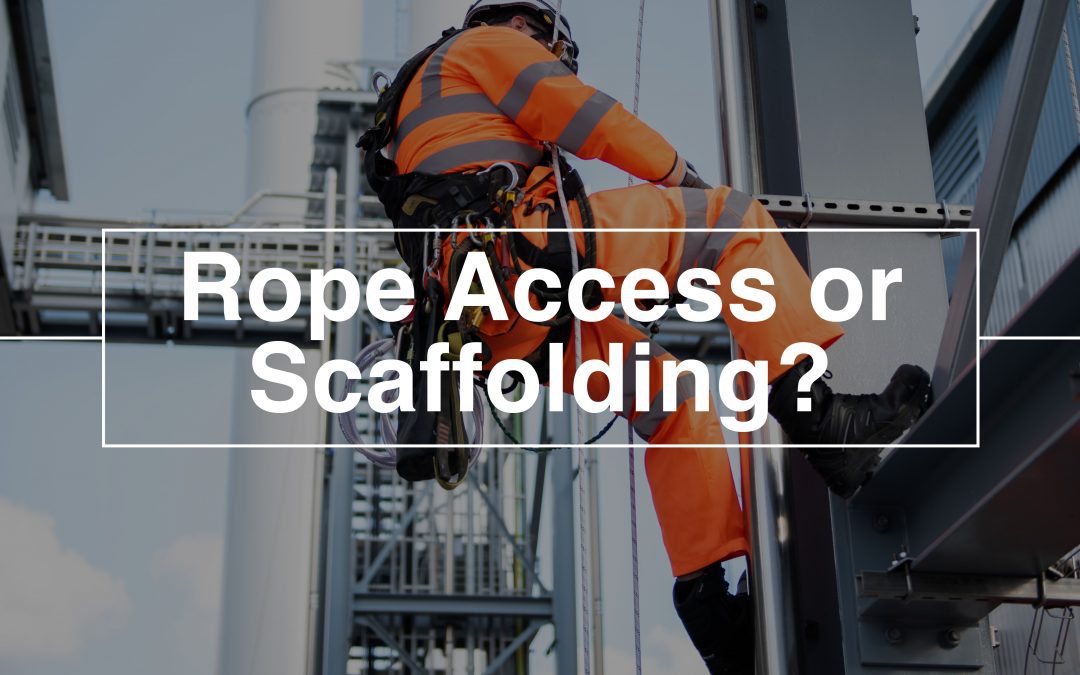When you need work at height, there are two main players – scaffolding or rope access. And while scaffolding continues to play a significant role in construction, rope access is rapidly gaining ground as the faster, safer and more cost-effective new kid on the block.
Obviously, we’re biased, but there’s one clear winner in the battle between rope access and scaffolding. So if you need inspection access, silo cleaning services, painting, safety netting and much more, here’s why you need professional rope access services.
Safety first
Working at height is inherently dangerous, so working on a scaffolding tower has got to be safer than dangling from a rope, right? Actually, rope access has a better safety record than some lower-risk jobs in warehousing and factories. In fact, it’s by far the safest option for working at height.
That’s down to a combination of factors. First, all our rope access technicians undergo rigorous training and utilise strict safety protocols. And all our teams use safety rigging measures and tethered tools to prevent accidents from falling equipment.
Save time and money
Time is money. And scaffolding takes time to put in place. So while there’s definitely a place for this method of working at height, rope access is significantly cheaper. And if working at speed is of the essence, then rope access wins hands down.
Every member of our rope access teams is responsible for their own rigging, using the latest techniques. As a result, it’s fast and not as equipment intensive, with smaller projects taking just minutes to set up. And because our teams use konnected for seamless real-time data sharing, you’ll find our work culture is tailor-made to save you time and money.
Minimal disruption
If business as usual is essential to you while work is being carried out, call your local rope access contractors. Here, the different approach to working methods makes all the difference.
Our rope access technicians work from the top of the building down, causing minimal disruption to your everyday business. And the fact that we don’t require ground access makes offshore rope access the ideal way to access difficult to reach structures. Plus, unlike a bulky scaffold tower, ropes don’t disrupt building exits and entrances.
Did we mention that our teams can be rigged for major projects in just a few hours? Now compare that to the disruption and delay caused by using scaffolding for your next project.
Convenience and flexibility
Let’s say you need building maintenance on a particularly delicate facade. Or one packed with architectural features that blocky scaffolding towers can’t work around. And there’s always the risk of scaffolding tie-in points causing some damage. If the aim is to access hard to reach areas, rope access has no equal.
Because ropes are so flexible and our technicians so agile, there’s nowhere that our teams can’t access – including hidden and confined spaces. It’s a flexibility that scaffolding can’t match. And there are other benefits to getting up close and personal with a building. For example, it’s much easier to pick up issues during a building survey when using industrial abseiling.
Finally, if your building needs ongoing maintenance, you won’t need to keep scaffolding in place. Because our equipment takes up so little space and is so quick and easy to set up, we can make a series of return visits if the project takes time to complete. And watching our experts working effortlessly from ropes is much more aesthetically pleasing than cumbersome scaffolding poles!
Ready to let rope access into your life?
Get in touch with us at Think Acess today to find out more.

